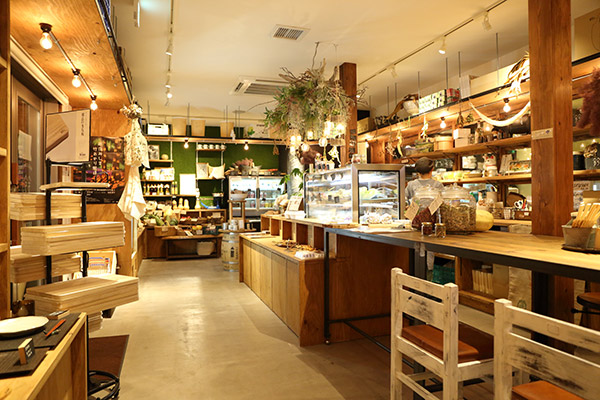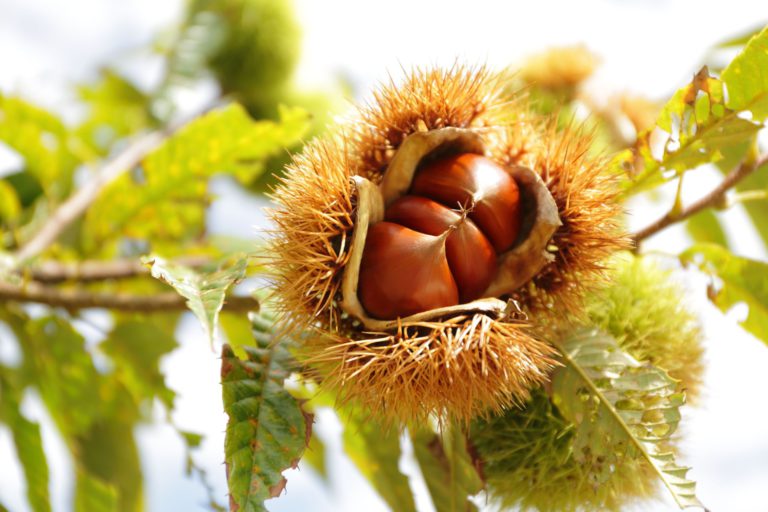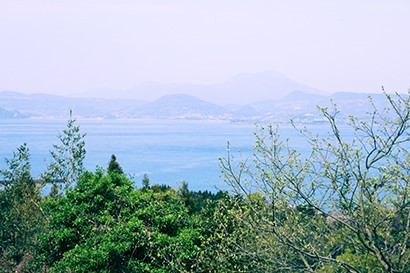Locally Produced and Consumed Food is the Best
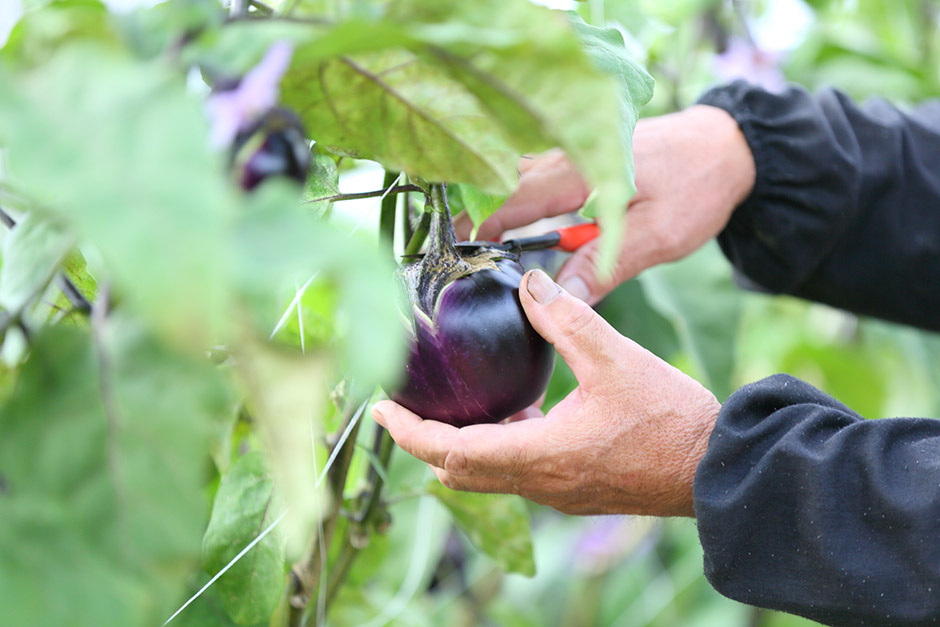
Taking advantage of the hot and humid weather, Niigata produces as many as 20 different varieties of eggplants from region to region. They have different shapes and textures so the locals have formed a unique food culture, cooking these diverse varieties in ways that best match each variety’s character. This time we visited Nagaoka City, the region that produces Kinchaku eggplants.
Kinchaku eggplants are delicious because they are grown in Nagaoka
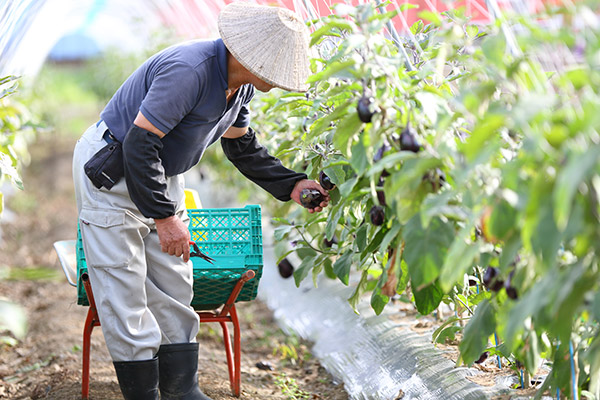
Why has Niigata long been a place of eggplant farming? It is to do with the fact that farmers could grow eggplants in the idle period, between rice planting and harvesting, when rice farmers are at their busiest, and also because Niigata has hot, humid summers perfect for growing eggplants.
Koichi Kobayashi, who has been a local eggplant farmer for more than 50 years, says Nagaoka City has all the prerequisites for growing delicious eggplants.
“Nagaoka is a basin surrounded by mountains, so it is especially humid. In the summer it is sticky and humid, and in the winter, the snow we get is also very moist and sticky. Also the soil around here is sedimentary soil from the Shinano River, making it rich in minerals. These conditions make delicious eggplants.”
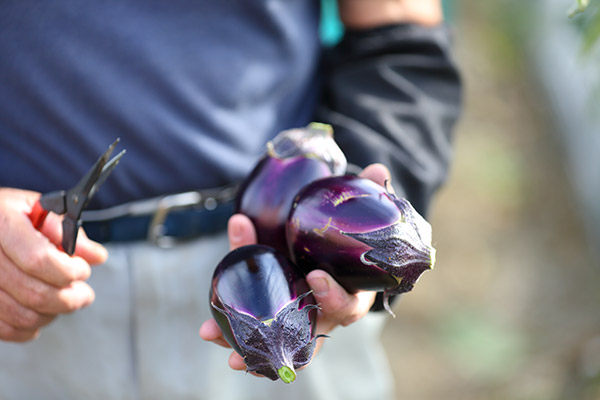
Kobayashi grows eggplants at his outdoor farm naturally as possible (i.e. with no cover). He deliberately gives them no water so that the eggplants suck up moisture from the soil and grow larger over time, becoming shiny, tight and rich in flavor.
The harvest time is from around June to October. “The ones we harvest at the height of a hot and humid summer are the best,” says Kobayashi.

Niigata has the largest farming area for eggplants in the country, yet eggplants from Niigata are hardly known. Why? It is to do with the fact that most of the eggplants are consumed within the prefecture. The eggplant-loving residents of Niigata use different varieties of eggplants for different dishes, just like Italians use different varieties of tomatoes.
Yakinasu eggplants (meaning “grilled” eggplants in Japanese) are, true to their name, most delicious when they are grilled until they have a thick texture. Nashinasu eggplants are best for pickling. Kinchaku eggplants, with their distinct sweetness, are best steamed and served with ginger and soy sauce, according to Kobayashi.
Passing on the seeds and the food culture. The bond between the producer and the chef
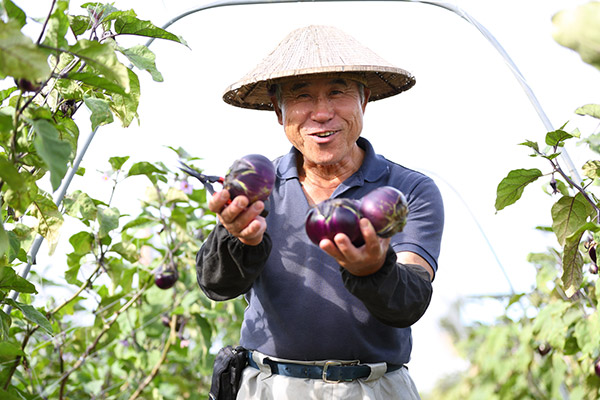
Kobayashi’s family have been eggplant farmers since the Edo period (1603–1868), and have been passing on their eggplant seeds in Nagaoka from generation to generation. Kobayashi has the responsibility of preserving these Kinchaku eggplant seeds and passing them on to future generations. This is why he has his own belief about communicating about the eggplants to people outside of Niigata Prefecture.
“I feel the phrase, locally produced and locally consumed, actually means the human body and soil are inseparable. Meaning, if you eat the food grown in the place you grew up, you will stay healthy. This is why I do not really want to urge people outside of Niigata Prefecture to accept Nagaoka’s food culture. Instead of taking the eggplants out of the prefecture, I would like these people to come to Nagaoka and eat them here,” says Kobayashi, with a full smile on his face.
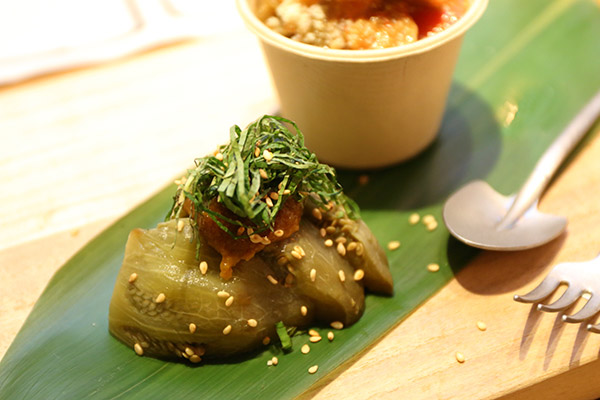
SUZU365, a delicatessen-style restaurant with dishes created with ample ingredients from Nagaoka, is the outlet Kobayashi recommends, saying it is the liveliest restaurant in Nagaoka right now.
Owner and chef Sho Suzuki was born in Nagaoka. He runs a few restaurants with the concept of connecting local food ingredients and people, dispatching the attractiveness of Nagaoka’s food.
The showcase of deli items included Kobayashi’s grilled Kinchaku eggplants with miso. We tasted it and almost let out a moan, as it was so rich in flavor, juicy and chewy, with rich sweetness spreading through our mouths.
Suzuki told us why Kinchaku eggplants are so great, and also about the importance of passing traditional, local food culture to future generations.
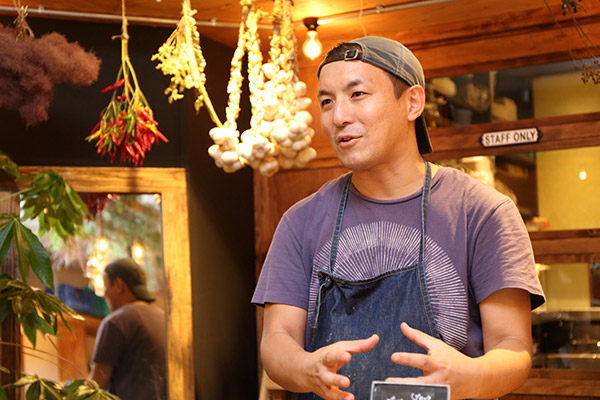
“Kobayashi’s Kinchaku eggplants are exceptionally large, heavy and have a dense flavor. Some young people actually do not know eggplants can be steamed. If we put a slightly stylish twist to the traditional food culture, more people will enjoy the food and farms will also see a meaning to continue. I would like to continue to pass on the great local food to future generations.”
Many diverse eggplant varieties, and the unique food culture that gets passed onto next generations.
Why not visit Nagaoka and enjoy the unique, delicious taste of the eggplants?
Kinchaku eggplants from Nagaoka City
Source:Koichi Kobayashi, eggplant farmer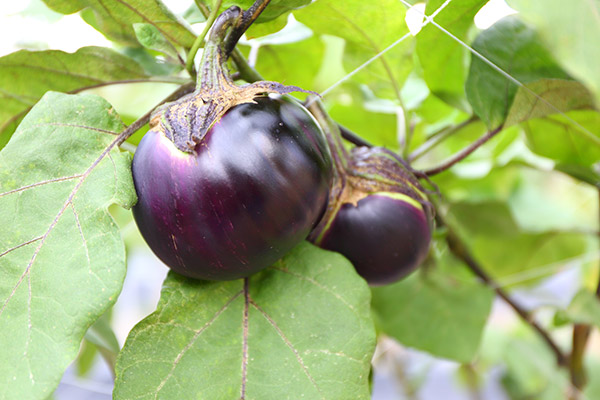
Peak Season
Eggplants get tight and most delicious in around August.
Tips
Good eggplants are taut and have a good color and shine.
Fresh ones have sharp thorns on the caps.
How to enjoy them
It is best to steam the eggplant and serve it simply with soy sauce or salt.
It can be easily steamed in a microwave oven, peeled and wrapped in cling-film, and microwaved for about 3 minutes.

